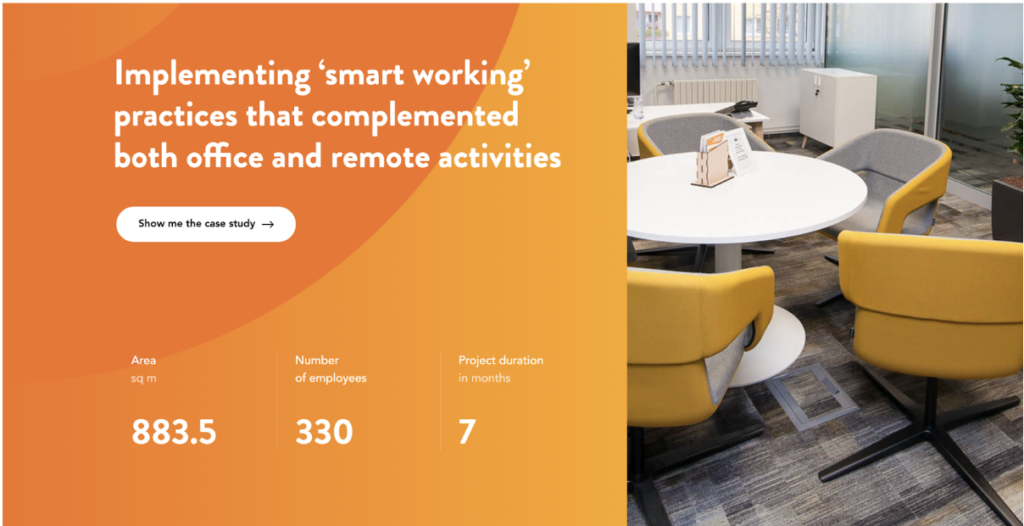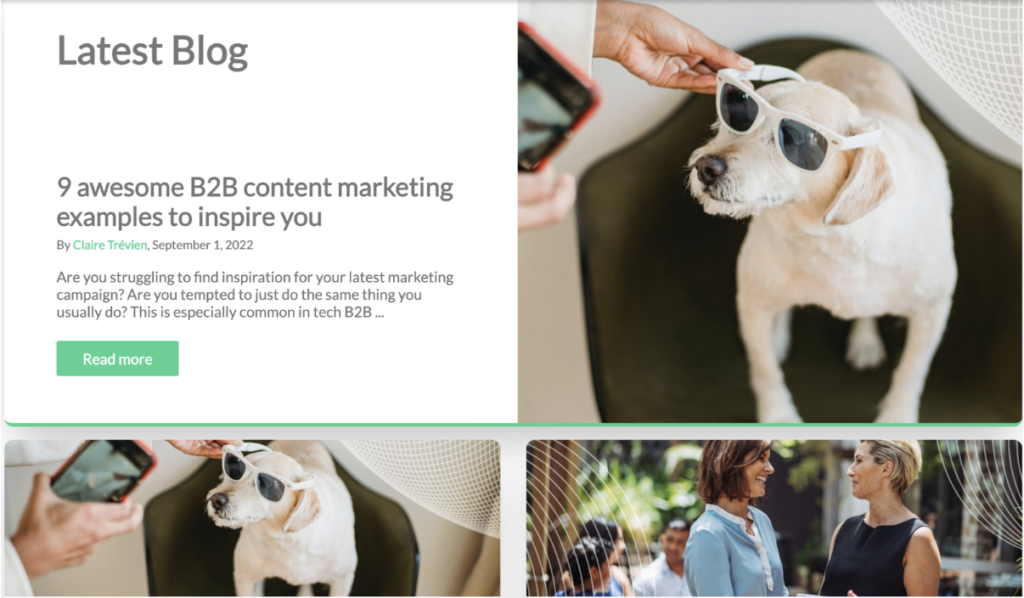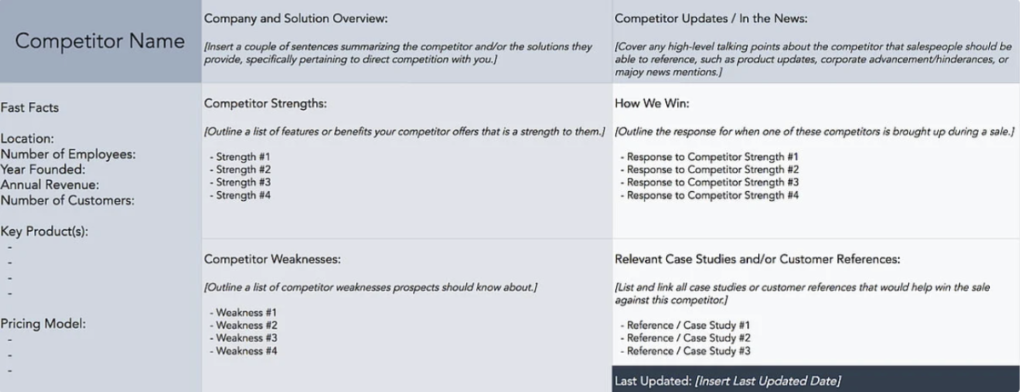Ever been stuck between two products and not sure which to choose? Whether it’s tomato ketchup or telecoms providers, today’s buyers are overwhelmed by choice when making a purchase decision (though, for me, Heinz ketchup will always have my heart).
And the one thing they need to be sure they’re making the best decision? More information. It’s why 73% of B2B tech consumers spend more time researching before committing to a purchase. And this is where the role of sales enablement content becomes apparent.
A sales enablement toolkit is essential to the sales funnel. If a potential prospect hasn’t heard a good enough reason to select your solution or service, or if a sales rep hasn’t explained it well enough, they’ll rule your company out in favour of a competitor. Worse, they won’t even consider you an option.
Luckily, you can create organised and accessible sales enablement content to help your brand reach high-potential prospects, increase conversions, and close deals.
What is sales enablement content?
It can be tricky to determine what sales enablement content should be since many of these assets will doubly serve sales and marketing lead generation campaigns.
Sales enablement content must aim to convert prospects at the later stages of the funnel, providing the information they need at just the right time.
For this reason, organised, accessible, well-positioned sales enablement assets are essential for the sales team’s arsenal. It ensures they are experts in the industry, target audience, and your brand’s solution or service, so their communication with prospects is always on target. For sales enablement content to perform best, marketing and sales teams must work together to create them.
There are two types of sales enablement content.
Buyer-facing:
- Answers buyers’ questions at critical stages of the purchase process.
- Functions for sales nurturing as well as marketing campaigns.
- It can be directed to different personas that a sales professional encounters throughout the journey.
Sales-facing:
- Ensures sales experts are well-informed on the industry, product, and target audience pain points.
- It still provides value to buyers – by bringing expertise, sales professionals can deliver an exceptional experience to prospects, making them more likely to convert.
Here are some examples you can use to build your arsenal.
1. Competitor benchmarking and analysis materials
To understand consumer needs, your sales team first needs to know who they’re up against. Seeing how competitors engage with the target audience can reveal what’s missing with your brand. And identifying where your company is outperforming the competition helps your sales team communicate this to prospects, making their decision a no-brainer.
A high-quality, competitive analysis document can also help marketers optimise their campaigns against the competition.
It’s tricky to provide prospects with the right reasons to purchase when every buyer has their own pain points, opinions, and situations. This is why it’s super important to start with buyer personas – a big part of the sales enablement content toolkit.
2. Case studies and testimonials

Nothing leads a prospect to purchase more than tangible evidence from real people. For late-stage prospects, a vote of confidence from a fellow customer could be the thing that seals their purchase decision. Case studies are a force to be reckoned with as a sales enablement strategy – if you have the opportunity to create one, don’t miss it.
The most important thing about case studies is to let the results do the talking. Provide details on the customer’s challenge, the solution needed, how your company made a positive difference and the results. That’s all you need – so keep it brief and to the point.
You can also create bite-sized video testimonials or written recommendations from your customers. Pool all your customer-centric resources together so that any salesperson can easily pull out quotes, case studies, or testimonials when needed.
If you’re not in the position to share customer testimonials or case studies yet – create a use case! They’re invaluable for showing how your solution or service can meet a target audience’s needs.
3. Explainer videos
55% of B2B buyers around the world find video the most useful type of content, offering an easy way to digest information visually. Video content is highly engaged with and arms sales reps with great conversion opportunities. Video is gold dust for social media engagement, so it’s a win-win-win for marketers, prospects, and sales teams.
Demo videos can be straightforward to create simply by screen recording. They provide a good educational resource internally for sales to brush up on their product knowledge.
4. Blog posts
They’re traditionally viewed as content marketing assets – but don’t underestimate their sales enablement potential. Informative blog posts can be used during the later stages of the sales funnel. Or, they can be an interesting conversation starter to form the basis of an email or LinkedIn InMail chain.

These are high-value assets for sales professionals. Blogs that explain how to use a product feature partner well with demos – enabling the prospect to self-learn before they feel ready to take a call.
Don’t limit your sales enablement blogs to explaining features. You could also write a comparison piece of your solution versus a competitor’s – demonstrating why yours is better. For a subtler approach, share product alternatives to your own, making it clear that yours is still the best.
5. eBooks and white papers
As they’re usually gated, they make for great tools for both marketers and sales – generating engagement metrics to optimise content and useful contacts to pass into the sales funnel. Sales reps can also leverage ungated versions in InMails or emails to add value and follow-up conversations.
White papers are usually research-backed, while eBooks answer typical challenges the target audience faces – both effective approaches to persuade prospects that your solution is the answer they need. By aligning with the sales team, you can ensure these assets speak to the needs of high-potential prospects.
Although eBooks and white papers provide great value to prospects, it can be challenging to expect them to read cover-to-cover. Keep them around using visually engaging formats to make the content more interesting.
6. Sales scripts, playbooks, battle cards
Here is where marketing traditionally meets sales enablement. Scripts, playbooks and battle cards provide talking points that sales professionals can use throughout the sales funnel. A playbook can also suggest best practices for everyday challenging situations. It enables a consistent conversational base throughout the journey and helps onboard new members.
While these talking points are pre-determined, it’s best to encourage the sales team to use them as a guide rather than word-for-word, ensuring they adapt the tone of voice appropriately to match the prospect and their unique needs.

Align with the sales team to monitor script performance for aspects to improve and optimise.
7. Social media content and messages
Social media platforms, especially LinkedIn, can be high converting platforms, especially as chatting via message or InMail provides sales teams with a base for meaningful prospect engagement.

Support their activity by maintaining an active social media presence, sharing consistent and varied posts such as blogs or 30-second videos, with sales conversions in mind. Salespeople can share high-performing posts as part of their message chain with prospects.
See our roundup of the best LinkedIn InMail template examples.
8. One-pagers
These provide a streamlined snapshot of a specific aspect of your product or service. In essence, they’re one-page elevator pitches.
One-pagers are nifty tools to help sales reps clearly articulate the benefits of a product or service – or boost their own knowledge. Work with sales to cherry-pick the most relevant features that respond to prospects’ challenges and make them as visually attractive as possible to attract attention quickly.
Make one-pagers add extra value by making them actionable checklists that prospects can use for free – for example – “10 features to look for when selecting a cloud cybersecurity provider”.
9. Sales presentations
These are the unsung heroes of sales enablement assets. While the delivery style is crucial, slide design is equally vital for leaving prospects with a good impression of your brand.
Consistent branding and interesting presentation elements will help your sales team stand out from the competition.
Have a master template on standby to make new presentations easier to build.
10. Sales enablement content: Collaborate for efficiency
Develop sales enablement content to make your sales team’s lives as efficient as can be to move leads faster along the funnel. It has just as much benefit for marketing, too – helping you understand your target audience and boosting the engagement metrics on the content shared by sales.
To make it even more efficient:
- Maintain active lines of communication between your marketing and sales teams
- Store everything in a cloud-based database to enable easy access for everyone.
Start keeping prospects well taken care of before they even make a decision. If you want to discuss how Isoline can help you tailor your content to support sales enablement, get in touch at: hello@isolinecomms.com.




